Liraglutide, a TFEB-Mediated Autophagy Agonist, Promotes the Viability of Random-Pattern Skin Flaps
- PMID: 33868571
- PMCID: PMC8032515
- DOI: 10.1155/2021/6610603
Liraglutide, a TFEB-Mediated Autophagy Agonist, Promotes the Viability of Random-Pattern Skin Flaps
Abstract
Random skin flaps are commonly used in reconstruction surgery. However, distal necrosis of the skin flap remains a difficult problem in plastic surgery. Many studies have shown that activation of autophagy is an important means of maintaining cell homeostasis and can improve the survival rate of flaps. In the current study, we investigated whether liraglutide can promote the survival of random flaps by stimulating autophagy. Our results show that liraglutide can significantly improve flap viability, increase blood flow, and reduce tissue oedema. In addition, we demonstrated that liraglutide can stimulate angiogenesis and reduce pyroptosis and oxidative stress. Through immunohistochemistry analysis and Western blotting, we verified that liraglutide can enhance autophagy, while the 3-methylladenine- (3MA-) mediated inhibition of autophagy enhancement can significantly reduce the benefits of liraglutide described above. Mechanistically, we showed that the ability of liraglutide to enhance autophagy is mediated by the activation of transcription factor EB (TFEB) and its subsequent entry into the nucleus to activate autophagy genes, a phenomenon that may result from AMPK-MCOLN1-calcineurin signalling pathway activation. Taken together, our results show that liraglutide is an effective drug that can significantly improve the survival rate of random flaps by enhancing autophagy, inhibiting oxidative stress in tissues, reducing pyroptosis, and promoting angiogenesis, which may be due to the activation of TFEB via the AMPK-MCOLN1-calcineurin signalling pathway.
Copyright © 2021 Xuwei Zhu et al.
Conflict of interest statement
The authors have declared that no competing interest exists.
Figures


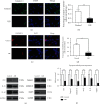
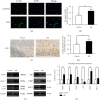
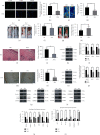
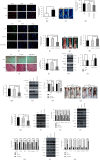
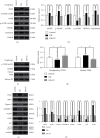

Similar articles
-
Metformin Promotes the Survival of Random-Pattern Skin Flaps by Inducing Autophagy via the AMPK-mTOR-TFEB signaling pathway.Int J Biol Sci. 2019 Jan 1;15(2):325-340. doi: 10.7150/ijbs.29009. eCollection 2019. Int J Biol Sci. 2019. PMID: 30745824 Free PMC article.
-
Trehalose promotes the survival of random-pattern skin flaps by TFEB mediated autophagy enhancement.Cell Death Dis. 2019 Sep 15;10(7):483. doi: 10.1038/s41419-019-1704-0. Cell Death Dis. 2019. PMID: 31522191 Free PMC article.
-
Puerarin enhances TFEB-mediated autophagy and attenuates ROS-induced pyroptosis after ischemic injury of random-pattern skin flaps.Eur J Pharmacol. 2024 Jul 5;974:176621. doi: 10.1016/j.ejphar.2024.176621. Epub 2024 Apr 26. Eur J Pharmacol. 2024. PMID: 38679118
-
Pseudoginsenoside F11 Enhances the Viability of Random-Pattern Skin Flaps by Promoting TFEB Nuclear Translocation Through AMPK-mTOR Signal Pathway.Front Pharmacol. 2021 Apr 29;12:667524. doi: 10.3389/fphar.2021.667524. eCollection 2021. Front Pharmacol. 2021. PMID: 33995096 Free PMC article.
-
Autophagy-dependent and -independent modulation of oxidative and organellar stress in the diabetic heart by glucose-lowering drugs.Cardiovasc Diabetol. 2020 May 13;19(1):62. doi: 10.1186/s12933-020-01041-4. Cardiovasc Diabetol. 2020. PMID: 32404204 Free PMC article. Review.
Cited by
-
Edaravone promotes viability of random skin flaps via activating PI3K/Akt/mTOR signalling pathway-mediated enhancement of autophagy.Int Wound J. 2023 Oct;20(8):3088-3104. doi: 10.1111/iwj.14184. Epub 2023 Apr 11. Int Wound J. 2023. PMID: 37042039 Free PMC article.
-
Notoginseng Triterpenes Inhibited Autophagy in Random Flaps via the Beclin-1/VPS34/LC3 Signaling Pathway to Improve Tissue Survival.Front Bioeng Biotechnol. 2021 Nov 19;9:771066. doi: 10.3389/fbioe.2021.771066. eCollection 2021. Front Bioeng Biotechnol. 2021. PMID: 34869285 Free PMC article.
-
Novel Insight into Functions of Transcription Factor EB (TFEB) in Alzheimer's Disease and Parkinson's Disease.Aging Dis. 2023 Jun 1;14(3):652-669. doi: 10.14336/AD.2022.0927. Aging Dis. 2023. PMID: 37191408 Free PMC article. Review.
-
Autophagy and the pancreas: Healthy and disease states.Front Cell Dev Biol. 2024 Sep 24;12:1460616. doi: 10.3389/fcell.2024.1460616. eCollection 2024. Front Cell Dev Biol. 2024. PMID: 39381372 Free PMC article. Review.
-
Thymoquinone alleviates the accumulation of ROS and pyroptosis and promotes perforator skin flap survival through SIRT1/NF-κB pathway.Front Pharmacol. 2025 Mar 25;16:1567762. doi: 10.3389/fphar.2025.1567762. eCollection 2025. Front Pharmacol. 2025. PMID: 40201684 Free PMC article.
References
MeSH terms
Substances
LinkOut - more resources
Full Text Sources
Other Literature Sources
Medical

